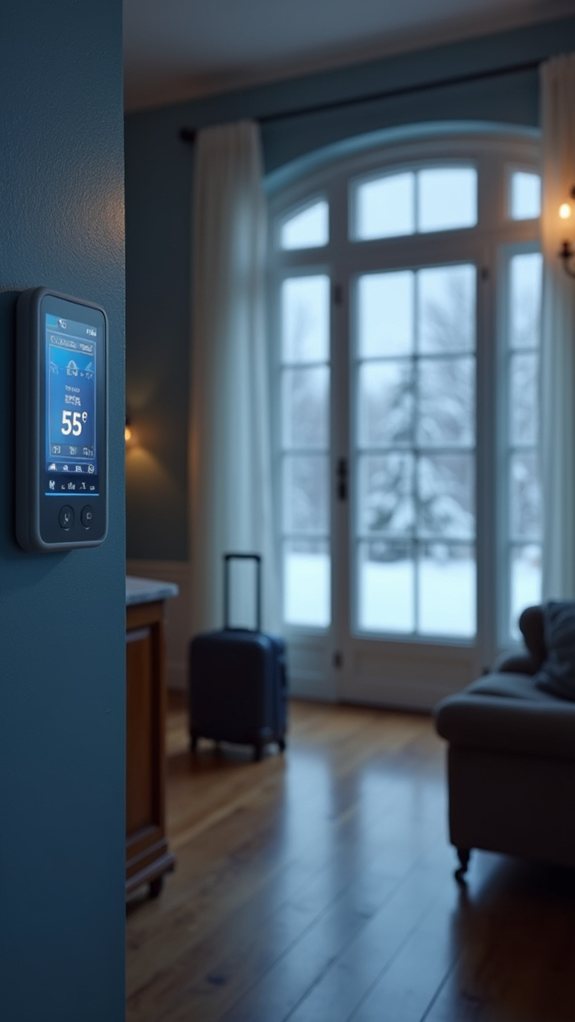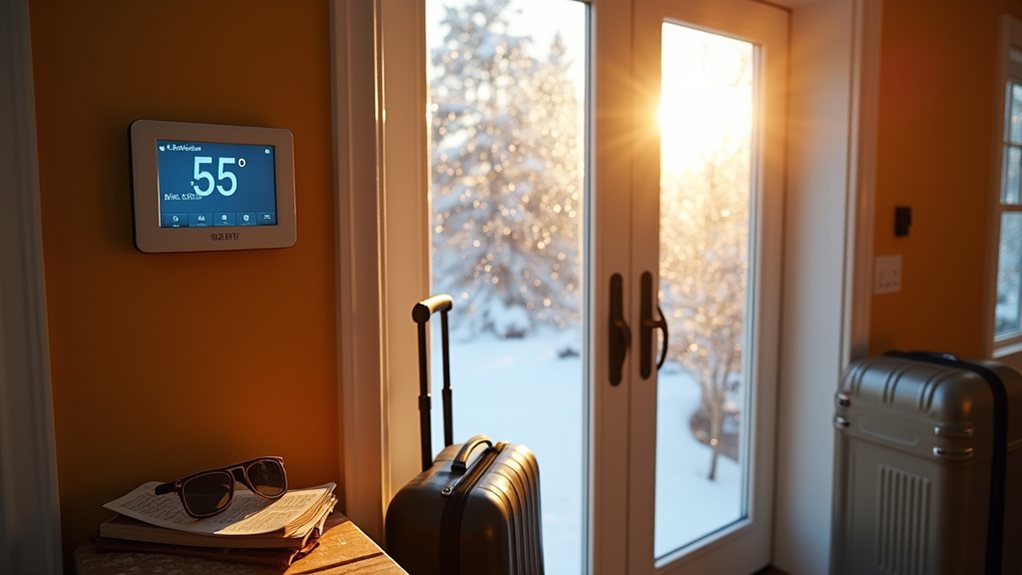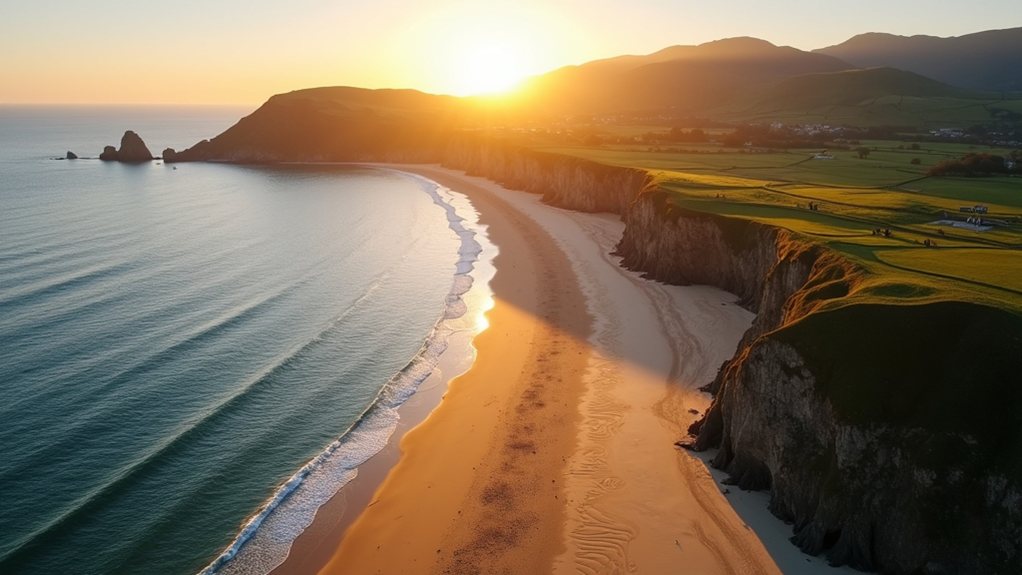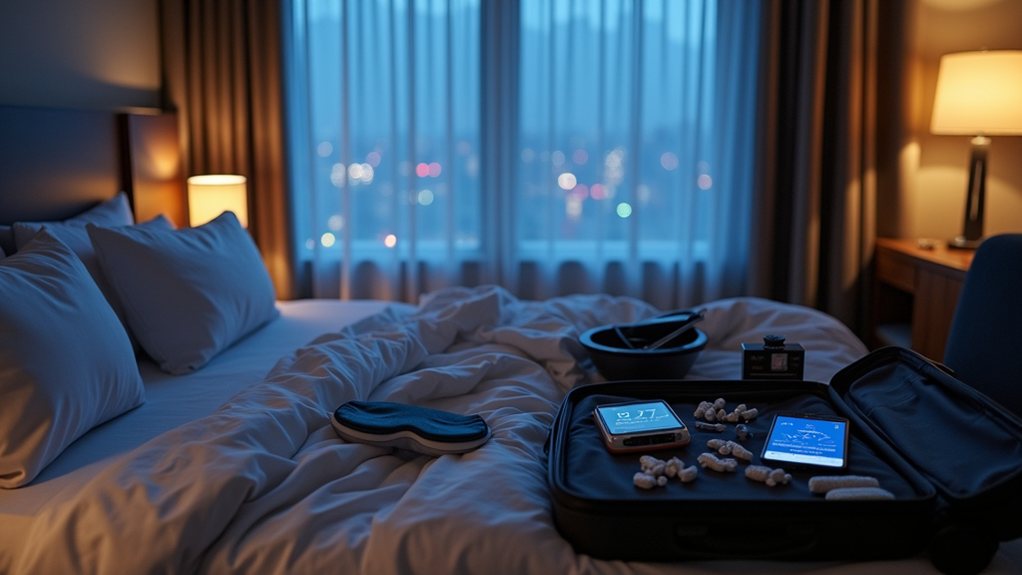Most winter vacationers fret about packing enough layers but completely overlook the vital temperature setting for their empty homes. While lowering the thermostat saves energy, setting it too low can lead to disasters like frozen pipes and damaged flooring, often resulting in thousands of dollars in repairs. The sweet spot—between 50°F and 62°F depending on trip length—protects homes while keeping heating costs manageable. What other essential factors might homeowners be missing before they dash off to their winter wonderlands?
The Perfect Winter Thermostat Setting While Away

What’s the initial thought that crosses your mind when packing for a winter getaway? For most travelers, it’s the excitement of escaping routine, not the thermostat setting they’re leaving behind.
Yet this overlooked detail—your home’s winter temperature—could be the difference between returning to a cozy haven or a costly disaster.
The Department of Energy recommends maintaining your home between 68-70°F when occupied, but what about when you’re sipping hot cocoa on a distant mountain? Experts suggest 55°F as the sweet spot for an unoccupied home during winter months.
This magic number balances significant energy savings with vital pipe protection, preventing those dreaded—and expensive—burst pipe scenarios that can cost hundreds in repairs.
Smart thermostats have transformed vacation temperature management, allowing homeowners to monitor and adjust settings remotely with a few taps on their smartphones.
“Think of it as insurance,” says one energy efficiency expert. “The ability to raise your home’s temperature when a surprise cold front hits, even while you’re halfway across the country, is priceless peace of mind.”
The missing factor most folks forget? Duration matters. For weekend trips, setting temperatures to 60-62°F works beautifully, but longer absences require more strategic thinking. Consulting professional winterizing advice can provide tailored solutions for your specific home and climate conditions.
For vacations extending beyond a week, especially during January’s bitter chill, that 55°F baseline becomes necessary, coupled with additional precautions like shutting off the main water supply and draining faucets in extreme cases. Setting your thermostat to exactly 50° F during vacation strikes the perfect balance between minimal energy usage and preventing frozen pipes.
For those planning a Florida escape, consider visiting Larry Penny Thompson Park where the tropical campground offers a perfect blend of outdoor relaxation with convenient access to wildlife attractions.
Consider this: lowering your thermostat by 7-10°F can slash heating bills by up to 10%. That’s money better spent on souvenirs than on unnecessary heating costs.
Your insulation quality significantly impacts how low you can safely set your thermostat, with well-insulated homes maintaining interior warmth more efficiently even at lower settings.
Plus, maintaining consistent temperatures prevents condensation and mold growth, ensuring you don’t return to unexpected surprises.
Next time you’re checking off that pre-vacation list, remember the thermostat deserves attention alongside unplugging electronics and stopping mail delivery.
Your future self, returning to a damage-free, energy-efficient home, will thank you for remembering this vital detail.







